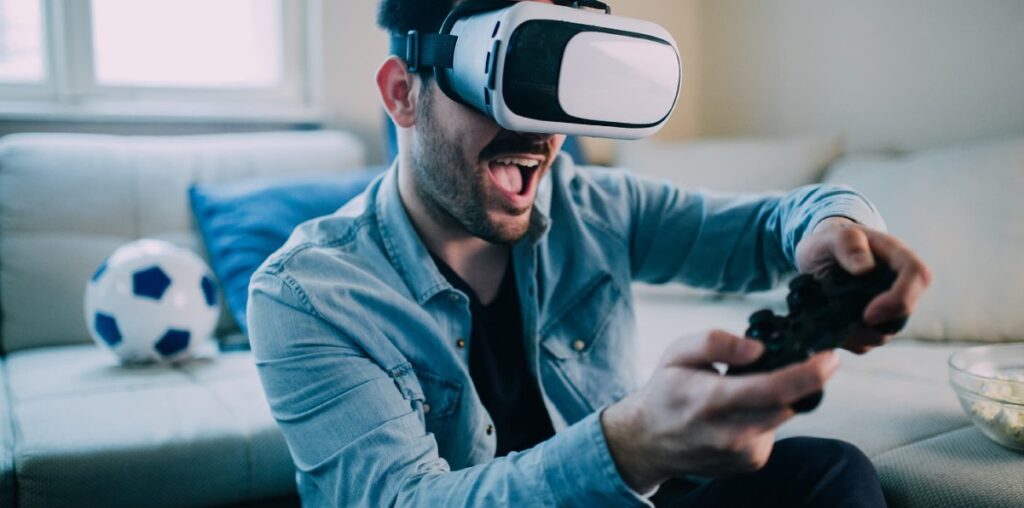Pick fiber or cable internet for the best VR experience
A fiber or cable internet connection is a near necessity for getting the best experience possible out of a VR headset like the Meta Quest, PlayStation VR, or Apple Vision Pro.
Fiber internet has the lowest latency of all internet connection types, and it has symmetrical speeds that facilitate interactive virtual reality activities like multiplayer gaming and video chat. Cable internet isn’t quite as fast as fiber, but it gives you a strong and consistent signal.
Avoid 5G home internet, DSL, and satellite, if possible
We recommend avoiding fixed wireless internet connections like 5G home internet for VR. Although 5G home internet likely works well most of the time, you have a higher chance of experiencing connection slowdowns, technical issues, and other bugs that can wreak havoc on your next trip through the metaverse.
A 5G home internet connection runs over fixed wireless, meaning it pulls from cellular signals beamed from radio towers to give you Wi-Fi. Compared to the fixed broadband of fiber and cable, this wireless connection is less stable. Speeds and latency can fluctuate based on factors like network congestion and even weather.
This isn’t a complete dealbreaker for VR enthusiasts, but it’s not ideal. To avoid laggy VR connections, long load times, and stomach-churning clunkiness, you’re better off sticking with a fast, fixed broadband connection like cable or fiber.
DSL and satellite—even worse for VR
DSL and satellite don’t work well for VR because they have notoriously slow speeds and high latency.
A DSL connection can’t go much faster than 100Mbps (and often goes much slower). Satellite internet literally gets beamed down from space, so it has the highest latency of all internet types.
Even worse, satellite internet typically comes with strict data restrictions. So you’re much more likely to burn through a month’s worth of data in just a handful of VR gaming sessions, leading to crushing slowdowns of your internet speeds.

